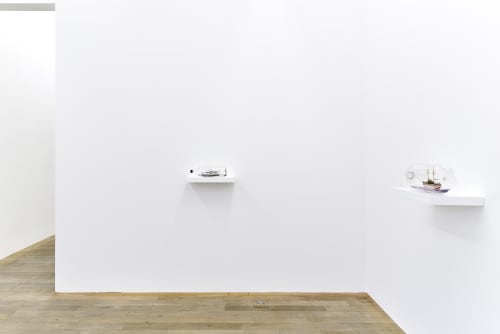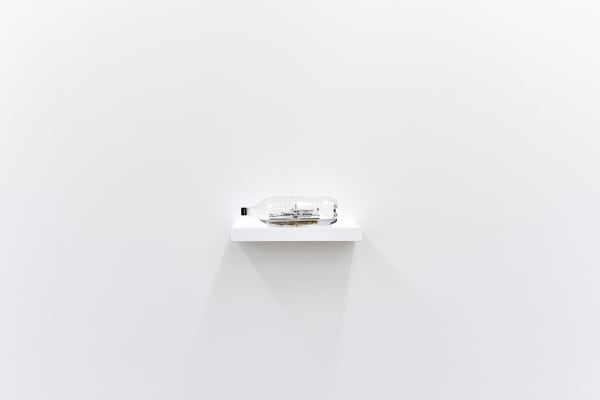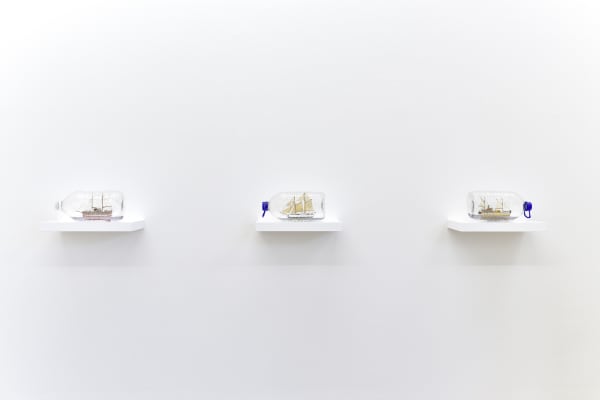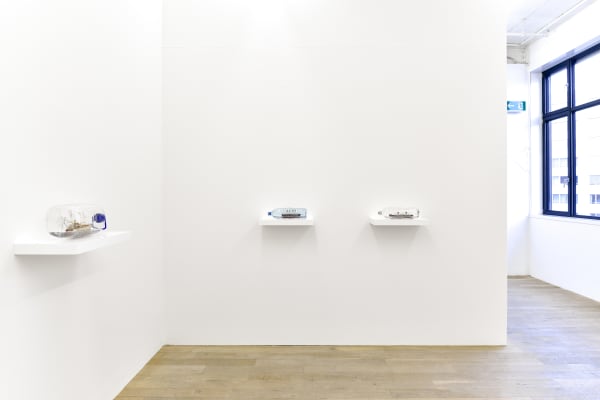Jorge Macchi: Drift BottlesGalerie Peter Kilchmann, Zahnradstrasse, Zurich
Galerie Peter Kilchmann is pleased to present a new group of works by Argentinean artist Jorge Macchi (*1963 Buenos Aires, Argentina; lives and works there) in the gallery's project space. In his exhibitions, Jorge Macchi creates a poetic world of paradoxes and metamorphoses that sensitize the viewer to the phenomena of supposedly banal constants of our everyday life.
October 31 - January 16, 2021
-
 Jorge MacchiLoop, 2020Installation, video (single channel, color, sound, 4 min), and object (card)
Jorge MacchiLoop, 2020Installation, video (single channel, color, sound, 4 min), and object (card) -
 Jorge MacchiNEWS, 2020Fan, motor73 x 130 x 130 cm (28.7 x 51.2 x 51.2 in.)Unique
Jorge MacchiNEWS, 2020Fan, motor73 x 130 x 130 cm (28.7 x 51.2 x 51.2 in.)Unique -
 Jorge MacchiQuotation, 2002/2020Single channel video, color, no sound, 1 min, loopEd. of 4
Jorge MacchiQuotation, 2002/2020Single channel video, color, no sound, 1 min, loopEd. of 4 -
 Jorge MacchiDrift bottle (Belle poule), 2020Plastic, wood, paper, resin, paint17 x 36 x 15 cm (6.7 x 14.2 x 5.9 in.)
Jorge MacchiDrift bottle (Belle poule), 2020Plastic, wood, paper, resin, paint17 x 36 x 15 cm (6.7 x 14.2 x 5.9 in.) -
 Jorge MacchiDrift bottle (Titanic), 2020Plastic, wood, paper, resin, paint9.5 x 35 x 9.5 cm (3.7 x 13.8 x 3.7 in.)
Jorge MacchiDrift bottle (Titanic), 2020Plastic, wood, paper, resin, paint9.5 x 35 x 9.5 cm (3.7 x 13.8 x 3.7 in.) -
 Jorge MacchiDrift bottle (Stadt Zurich), 2020Plastic, wood, paper, resin, paint12 x 36 x 12 cm (4.7 x 14.2 x 4.7 in.)
Jorge MacchiDrift bottle (Stadt Zurich), 2020Plastic, wood, paper, resin, paint12 x 36 x 12 cm (4.7 x 14.2 x 4.7 in.) -
 Jorge MacchiFlag, 2020Gouache on paper60 x 85 cm (23.6 x 33.5 in.)
Jorge MacchiFlag, 2020Gouache on paper60 x 85 cm (23.6 x 33.5 in.) -
 Jorge MacchiDevil, 2020Gouache on paper40 x 30 cm (15.7 x 11.8 in.)
Jorge MacchiDevil, 2020Gouache on paper40 x 30 cm (15.7 x 11.8 in.) -
 Jorge MacchiFlag, 2020Gouache on paper50 x 72 cm (19.7 x 28.3 in.)
Jorge MacchiFlag, 2020Gouache on paper50 x 72 cm (19.7 x 28.3 in.)

















